11 Types of Black Birds in New Jersey (With Pictures)
Last Updated on
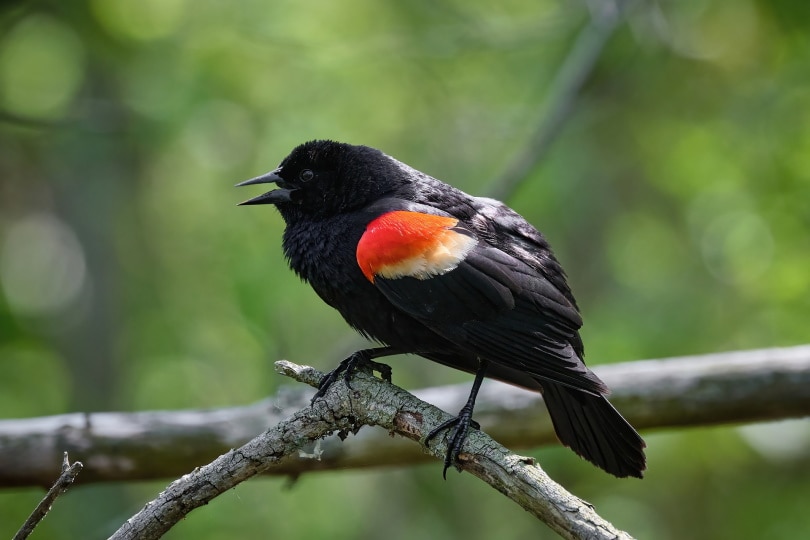
Whether you’re new to birdwatching or just want a better idea of what’s out there, black birds are among the most spotted birds in New Jersey. In fact, some birdwatchers actively try to seek out the black birds on this list simply due to their beauty! If you’re birdwatching in the Garden State, here are 11 different black birds that you can spot throughout the year.

The 11 Types of Black Birds in New Jersey
1. Red-Winged Blackbird
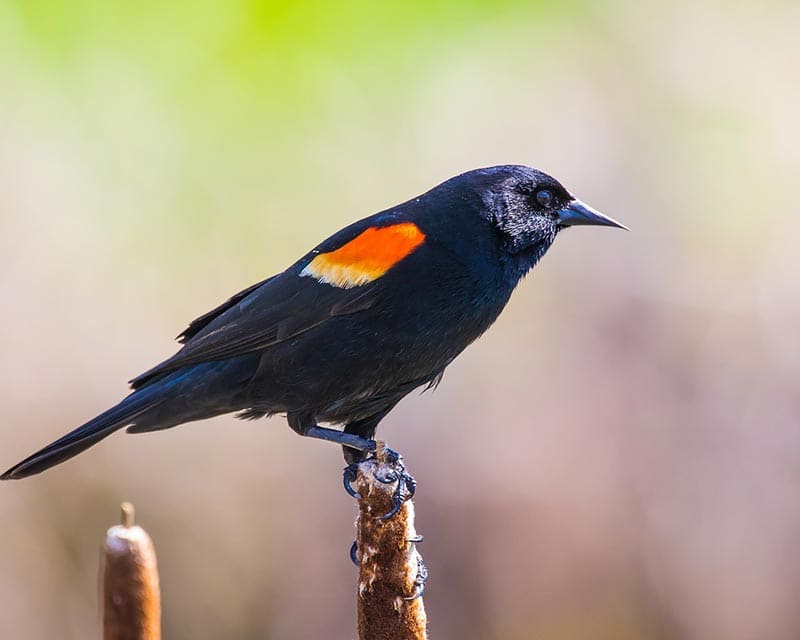
| Scientific Name: | Agelaius phoeniceus |
| Population: | 210 million |
| Weight: | 1.1 to 2.7 ounces |
| Wingspan: | 12.2 to 15.8 inches |
| Time In New Jersey: | Year-round |
One of the most common black birds that you can find in New Jersey is the red-winged blackbird. While they have “red-winged” in the name, they’re actually red-shouldered. Most of their shoulder is red, though there’s a splash of yellow there too.
The rest of the bird is entirely black, including the wings, eyes, and beak. They live year-round in New Jersey, so you can see these birds flying around regardless of the season.
2. European Starling

| Scientific Name: | Sternus vulgaris |
| Population: | 200 million |
| Weight: | 2.5 to 3.5 ounces |
| Wingspan: | 12 to 17 inches |
| Time In New Jersey: | Year-round |
The European starling is an invasive species that has a strong foothold in the country. With few natural predators, these birds have thrived and have a year-round range throughout the entire continental United States.
Compared to many birds, they’re on the larger side, and they commonly bully other birds out of areas. Most people consider the European starling to be a pest bird because of this.
The European starling is a black bird, but they’ll often have green, purple, and even white flecks and hues in their feathers.
3. Common Grackle
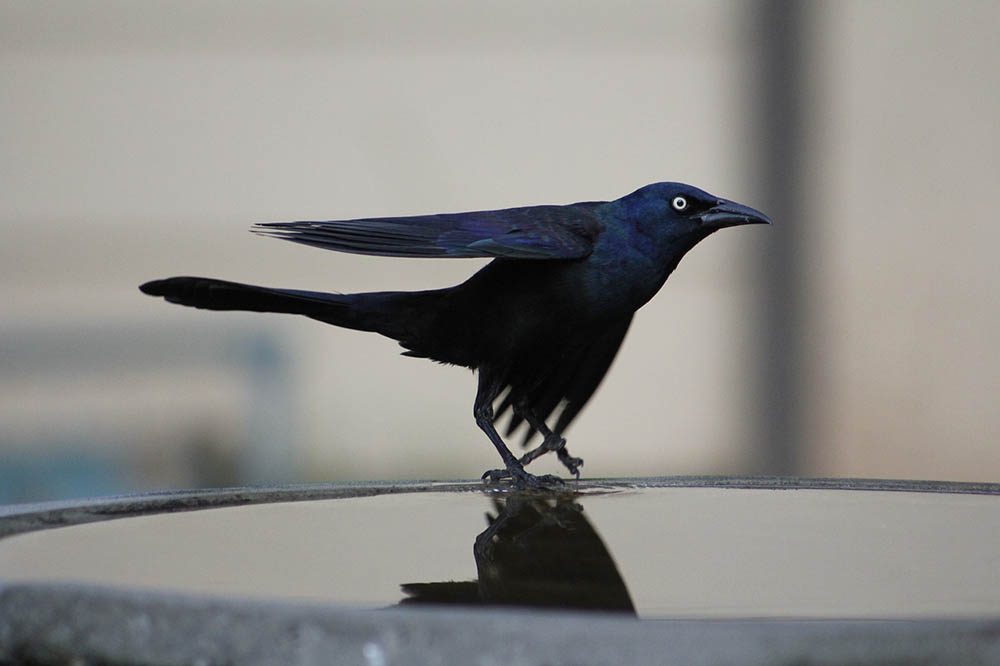
| Scientific Name: | Quiscalus quiscula |
| Population: | 67 million |
| Weight: | 2.6 to 5 ounces |
| Wingspan: | 14.2 to 18.1 inches |
| Time In New Jersey: | Year-round |
The common grackle is s common black bird that you can find in New Jersey. They live there year-round, and males and females have distinctly different appearances.
Males have blue heads, with gold, purple, and black throughout their bodies. Females fit a more “black bird” appearance. They’re single colored, a dark brown that is so dark, it almost looks black at times.
4. Brown-Headed Cowbird
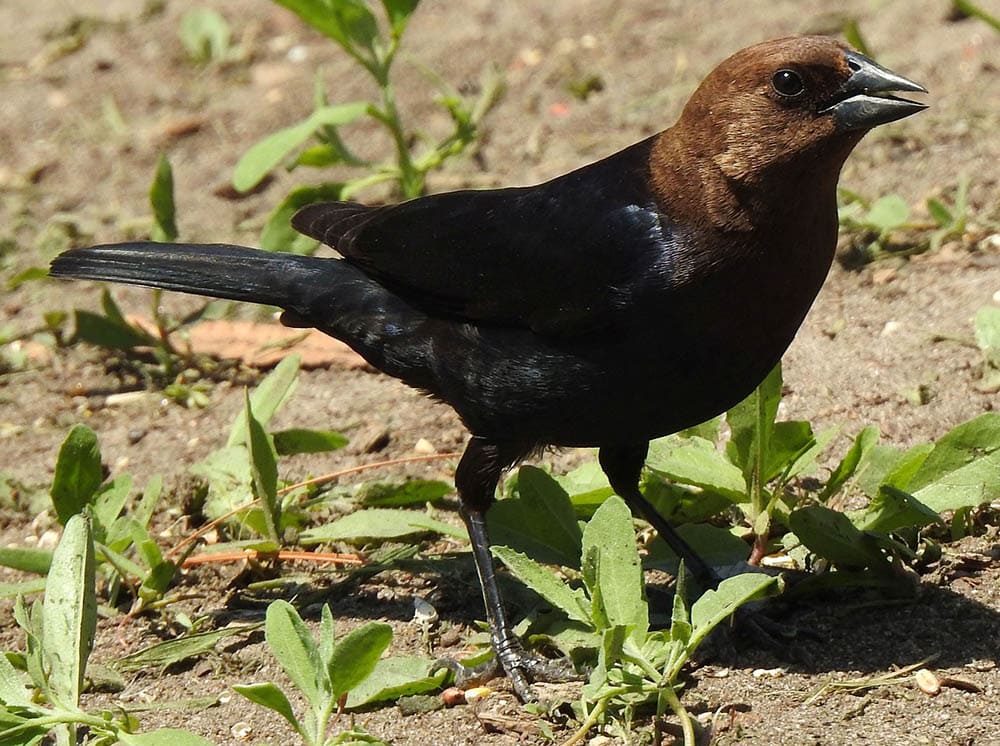
| Scientific Name: | Molothrus ater |
| Population: | 56 million |
| Weight: | 1.5 to 1.8 ounces |
| Wingspan: | 14.2 inches |
| Time In New Jersey: | Year-round |
The brown-headed cowbird is unique in that they don’t have their own nests. Instead, they discreetly lay their eggs in other birds’ nests and have those birds raise the young as their own.
Females tend to be entirely brown and don’t really fit the “black bird” list, but males typically have darker bodies. Their heads are brown, as their name suggests, but the rest of the bird is darker, with black, purple, and blue hues.
5. Baltimore Oriole

| Scientific Name: | Icterus galbula |
| Population: | 6 million |
| Weight: | 1.1 to 1.4 ounces |
| Wingspan: | 9.1 to 11.8 inches |
| Time In New Jersey: | Breeding season |
When you think of a Baltimore Oriole, black is probably the second color that comes to mind. They have bright orange chests, underbellies, and tailfeathers, but the top half of their body is all black. This includes their eyes, heads, and beaks.
6. Boat-Tailed Grackle

| Scientific Name: | Quiscalus major |
| Population: | 8.2 million |
| Weight: | 3.3 to 8.4 ounces |
| Wingspan: | 15.3 to 19.7 inches |
| Time In New Jersey: | Year-round |
While you can find the boat-tailed grackles year-round in New Jersey, you’re only going to find them right along the shoreline. They don’t typically venture farther inland.
So, if you are near the shore in New Jersey and see a black bird with a very long tail, there’s a good chance that you’re looking at a boat-tailed grackle. But while males have this extreme black appearance, female boat-tailed grackles typically have far more brown throughout their bodies.
7. Orchard Oriole
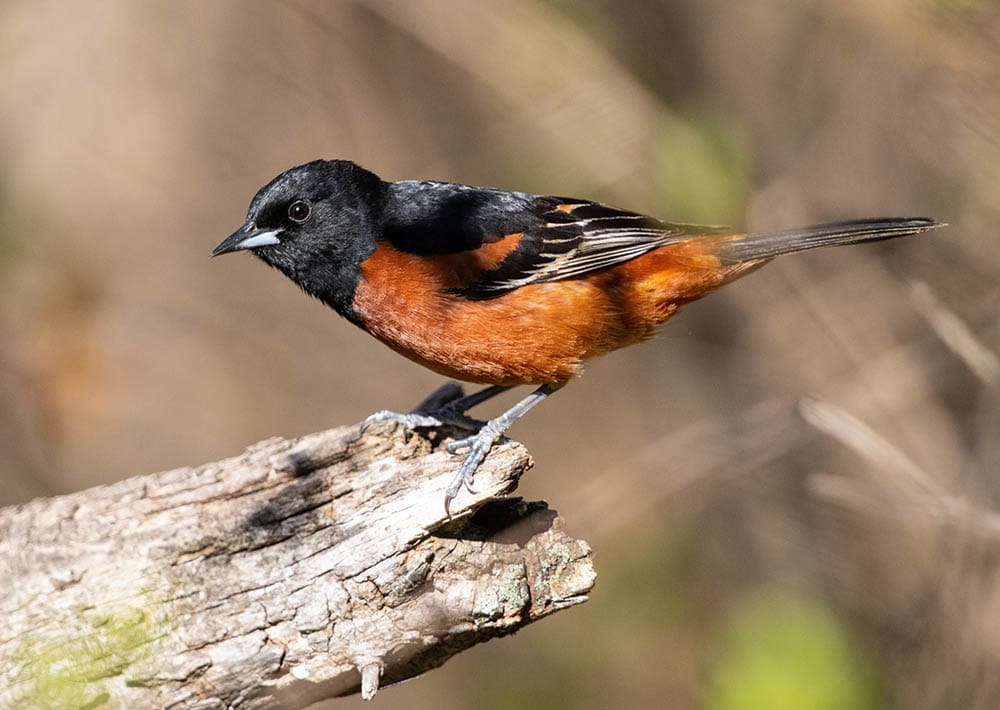
| Scientific Name: | Icterus spurius |
| Population: | 12 million |
| Weight: | 0.6 to 1 ounce |
| Wingspan: | 9.8 inches |
| Time In New Jersey: | Breeding season |
The orchard oriole is an oriole bird that probably isn’t top of mind when thinking of blackbirds in New Jersey. You can only see these birds this far north during the warmer months of the year, when they come up to breed.
Males have bright orange bodies with black heads, wings, and tail feathers. Female orchard orioles are typically yellow, but they will have some black throughout the wings and tail feathers.
8. Bobolink

| Scientific Name: | Dolichonyx oryzivorus |
| Population: | 11 million |
| Weight: | 1 to 2 ounces |
| Wingspan: | 10.6 inches |
| Time In New Jersey: | Migration and breeding |
You won’t find the bobolink throughout all of New Jersey for much of the year, as they only migrate through the lower half of the state. However, in the northern half of New Jersey, these birds will hang out for the warmer breeding season.
Males have black heads and chests, and their wings are both white and black. On the back of their head, male bobolinks have a notable white patch. However, females look nothing like this. Female bobolinks are mostly yellow, with small amounts of black on their wings.
9. Eastern Meadowlark
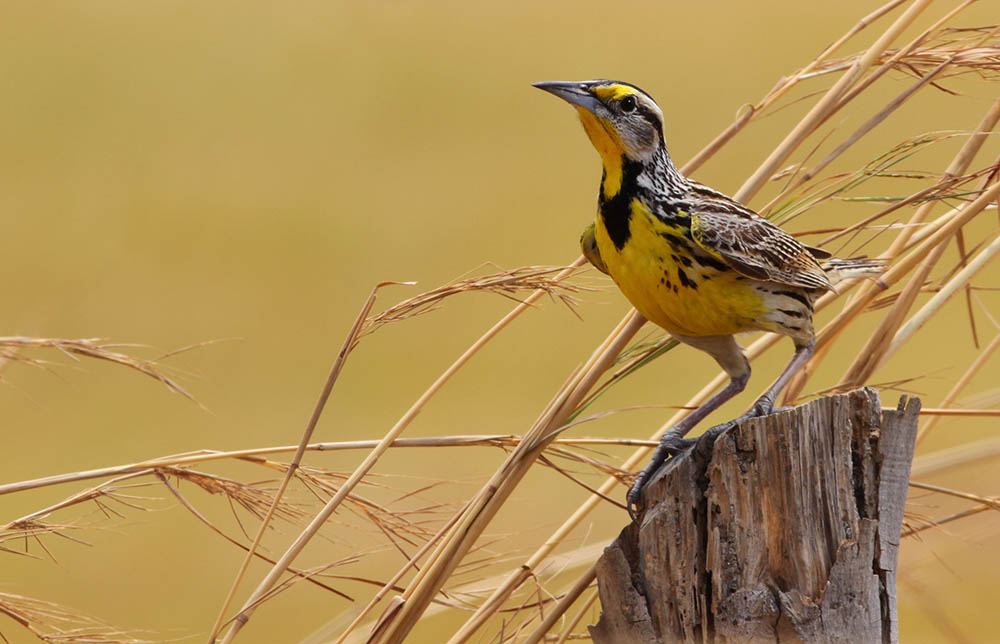
| Scientific Name: | Sturnella magna |
| Population: | 37 million |
| Weight: | 3.2 to 5.3 ounces |
| Wingspan: | 13.8 to 15.8 ounces |
| Time In New Jersey: | Year-round |
The eastern meadowlark has little black throughout their body, regardless of sex. While they have black on their chest, wings, and head, it’s all mixed in with white and yellow.
This great mixture of vibrant colors makes them wonderful birds to look at, and you can find them in New Jersey throughout the entire year.
10. Rusty Blackbird
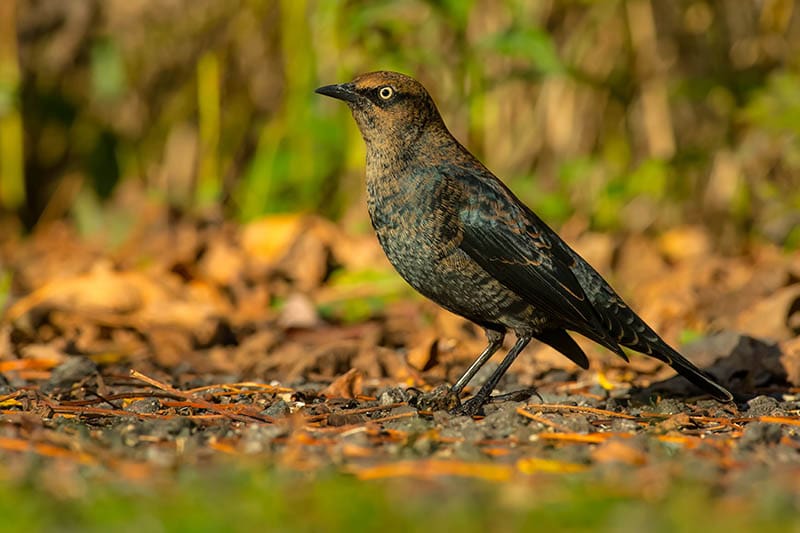
| Scientific Name: | Euphagus carolinus |
| Population: | 5 million |
| Weight: | 1.7 to 2.8 ounces |
| Wingspan: | 14.6 inches |
| Time In New Jersey: | Nonbreeding season |
Rusty blackbirds fly south to New Jersey during the winter, and when things start to warm back up, they fly farther north.
While the male is all black except for their white eyes, the female rusty blackbird has far more brown throughout their body.
11. American Crow
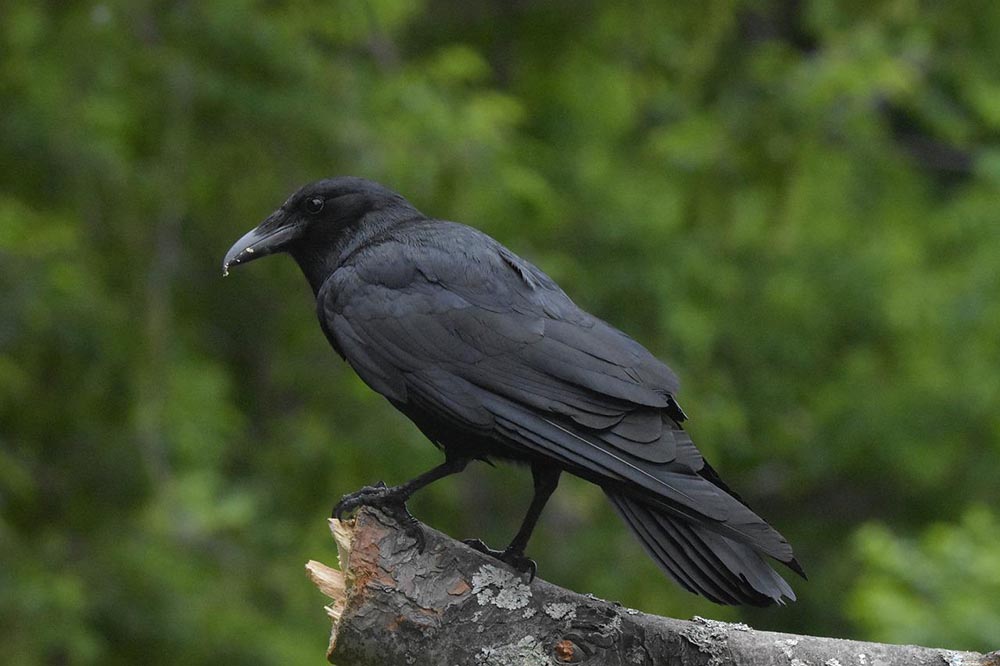
| Scientific Name: | Corvus brachyrhynchos |
| Population: | 31 million |
| Weight: | 11.2 to 21.9 ounces |
| Wingspan: | 33.5 to 39.4 inches |
| Time In New Jersey: | Year-round |
You can find the American Crow in just about any area with humans in New Jersey. They thrive in many landscapes, so they’re among the most recognized birds despite their low population numbers.
The American crow is entirely black and much larger than any of the other birds on this list. Most people consider these birds to be pests, but they are extremely intelligent.

Final Thoughts
Now that you know more about black birds in New Jersey, perhaps you can identify what exactly you’re looking at the next time that one flies near you.
Just keep in mind that you can’t spot all the birds on this list throughout all of New Jersey, as many only visit throughout certain portions of the year. Still, that should help you narrow down what you’re looking at!
So, keep your eyes on the sky, and you should be able to see more than your fair share of blackbirds in the Garden State.
Featured Image Credit: Howard Walsh, Pixabay
About the Author Robert Sparks
Robert’s obsession with all things optical started early in life, when his optician father would bring home prototypes for Robert to play with. Nowadays, Robert is dedicated to helping others find the right optics for their needs. His hobbies include astronomy, astrophysics, and model building. Originally from Newark, NJ, he resides in Santa Fe, New Mexico, where the nighttime skies are filled with glittering stars.
Related Articles:
Monocular vs Telescope: Differences Explained (With Pictures)
10 Types of Hummingbirds in Arkansas (With Pictures)
8 Types of Hummingbirds in Nebraska (With Pictures)
5 Types of Hummingbirds in Idaho (With Pictures)
3 Types of Hummingbirds in Mississippi (With Pictures)
8 Types of Hummingbirds in Kansas (With Pictures)
5 Types of Hummingbirds in West Virginia (With Pictures)
5 Types of Hummingbirds in Ohio (With Pictures)
